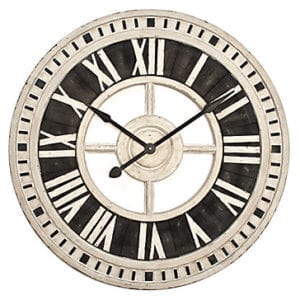ELYSIAN’s seven steps to stop procrastination and lead a more efficient life
STOP PROCRASTINATION – We were going to write an in-depth analysis of the causes and effects of procrastination in America but then we decided to make ham sandwiches and watch a few episodes of The Office.
Sure, we think of procrastination as kind of a joke. But in terms of time and money down the drain, it’s no laughing matter. In 2008, a research firm estimated that procrastination cost the American economy $650 billion dollars a year in lost productivity.
We’ve been waiting for the firm to release updated figures, but it seems they’re behind schedule. Kidding. We don’t know why there aren’t more recent figures, but you don’t have to be a statistician to realize that wasting time is a big deal.
Yes, technology has made our lives infinitely more convenient. (Do you remember the days before Google Maps? Two words for you: Paper. Maps.) But these little hand-held computers we keep in our pockets are prodigious time stealers. Hello, social media. Hello, Crossy Road.
But we at Elysian prefer to think of ourselves as problem-solvers rather than complainers. So, here is our seven-step guide to a more productive life.
Kate Spade pop floral medium 17-month planner, katespade.com
Start by making a “To Do” list.
Most clinicians agree that anxiety is a key factor in procrastination. The feeling of “having so much to do that you don’t know where to start” can make it extremely difficult to take action. Take a moment to make a master list of everything on your mind. Jot down all the things you have to do, both big and small. Take a few minutes to brainstorm so you don’t forget anything.
Prioritize.
Divide your tasks into categories based on urgency: Immediate. Today. This Week. This Month.
Project management is time management.
When you have a set schedule with time blocked off to attend to your top priorities, you are more likely to stop procrastination. Estimate how long each task on your list will take and set your schedule accordingly. You may need to move some items from the Immediate category to the This Week or This Month section.
Get to it!
Now that you’ve spent about 15 minutes assembling your To-Do list, setting your priorities, and blocking out your schedule, it’s time to get busy. This is when adept procrastinators tend to really get creative.
Ham sandwiches and old television reruns are just the beginning. Do you feel a sudden urge to clean out the cabinet under the kitchen sink when tax season comes along? This is when you really need to stick to the To-Do List.
Try the Pomodoro Technique.
One of the most effective techniques for making a dent in a formidable workload is to break up the job into shorter segments of approximately 25 minutes. Author and efficiency expert Francesco Cirillo named this the Pomodoro Technique after his kitchen timer which is in the shape of tomato (pomodoro is the Italian word for tomato). You don’t have to use a kitchen timer to implement the Pomodoro Technique, although that tomato timer is awfully cute. You can use a standard kitchen timer or even the timer on your phone as long as you won’t get distracted and seduced by Instagram or Words With Friends.
The important thing is to remember that a 6-hour mega task is daunting and overwhelming, the kind of thing you want to postpone until you feel like you’re supremely up to the task. But a 25-minute task is easy-peasy, something you can breeze through. And after you have a few victories under your belt, the exhilaration of ticking a completed task off your list becomes more attractive than an illicit ham sandwich or rerun binge.
http://https://www.youtube.com/watch?v=Tf1s9SNH7cA
Built downtime into your agenda.
Sure, we’re aiming for maximum efficiency. But you’re not a robot, and sometimes pushing too hard just causes a backlash. Instead of binging on a few episodes of The Office, you might find yourself on an Orange Is the New Black full-season bender. Be kind to yourself. We recommend setting aside 10 minutes at the top of each hour to take a bathroom break, stretch your legs or get a glass of water. Don’t forget to make time for a proper lunch and a brief walk or other activity to get your blood circulating. If you think that intermittent breaks throughout the day seem like a waste of time, efficiency experts beg to differ. In fact, they’ve found that breaks lead to greater productivity because you can’t drive full-throttle on an empty tank of gas.
Begin again. And again.
You will mess up. You will waste time. You will answer your phone and an hour will lapse while a friend recounts every detail of her recent trip to the Dalmatian Coast. You are most likely to fall prey to a time siphon when your priorities are not clearly defined. There’s nothing wrong with excusing yourself from a conversation when there is something more pressing for you to accomplish. If you find yourself in the fog, go back to step one and begin again. Constantly evaluate your methods, keep what works, and discard what doesn’t. Look for new techniques in books and from colleagues and friends.

The 7 Habits of Highly Effective People
Remember that ultimately, your objective isn’t to work yourself into the ground, but rather to use your time efficiently to accomplish the things that mean the most to you in life. A balance between work and play, exertion and rest, ideation and creation are crucial components of a successful career and a good life.
We hope that our tips help you to stop procrastination, and ultimately, meet your goals!




